
+91 8095511877

+91 8095511877
Prostate enlargement is a condition that affects men above the age of fifty. It is not so common in those below forty.
The prostate is a small gland about the size of a walnut. It lies below the urinary bladder and in front of the rectum. It surrounds the urethra that takes the urine from the bladder to the outside.
The prostate produces semen that carries the sperms outside the body. As you age, the size of the prostate also grows gradually. After some time, it will reach the size of a small lemon. When it grows further, it will put pressure on the urethra and the bladder. Once this happens, you will have many symptoms.
You will have these symptoms while passing urine. The pressure on the bladder will make you feel like passing urine more often. But the flow of urine will be weak due to the pressure on the urethra.
There are many tests to detect an enlarged prostate. Ultrasound scans and cystoscopy are the most common ones. Prostate-specific antigen(PSA) tests will help to know your risk of prostate enlargement.
In some persons, medicines will help to keep the symptoms under check. If this does not, help you will need treatments to reduce the size of the prostate. Transurethral resection of the prostate(TURP) is the most common option. If the symptoms are severe, you will need surgery to remove the whole of the prostate.
Most of the symptoms of an enlarged prostate are related to urination. Having an enlarged prostate will
All these symptoms occur due to the pressure on the urethra by the enlarged prostate. As a result of this, the muscles in the urinary bladder gets overactive. The urinary bladder then tries to contract with more force to push urine out of it.
The exact cause of an enlarged prostate is not very clear. Changes in the cells of the prostate and testes as you age may play a role. The hormonal changes that occur in your body as you grow old may also have a part. A fall in testosterone levels and a rise in estrogen levels is common in those with prostate enlargement.
The prostate gland is a small walnut-shaped gland that lies just under the bladder and in front of the rectum. It surrounds the urethra, the small tube that takes urine and semen out of your body.
As you grow older, the size of the gland increases to almost the size of a lemon. Then it starts putting pressure on the bladder, making you feel like passing urine more often.
As it grows, the gland also puts pressure in the urethra. It is the reason why you will have a weak flow of urine. It also causes interruptions to the stream.
There are many ways to find an enlarged prostate. Tests will reveal the size of the prostate helping the doctors to plan the treatment.
In some persons, medicines will help to keep the symptoms under check. If this does not, help you will need treatments to reduce the size of the prostate. Transurethral resection of the prostate(TURP) is the most common option. If the symptoms are severe, you will need surgery to remove the whole of the prostate.
Some factors that the doctors look into while deciding the treatments are
It is a minimally invasive surgery to reduce the size of the prostate. It helps to relieve the pressure on the urinary bladder and urethra.
The doctor will do a TURP, by inserting a small wire called a resectoscope through the penis and to the urethra. The doctor will then trim any excess growth to remove the pressure on the urethra and urinary bladder.
It is a safe procedure with very few risks and complications. You will have it if the symptoms are moderate or severe.
The duration of the procedure will be around an hour. You will be in hospital for a day.
You will have this procedure if your symptoms are moderate. The surgeon will make a few cuts in the prostate gland in the areas where it puts pressure in the urethra and bladder. For this, the surgeon will insert a resectoscope through the tip of the penis into the urethra. The surgeon will not remove any part of the prostate during this.
It is surgery to remove a part or whole of the prostate gland. If the surgeon feels that your symptoms will get better by removing a small section of the prostate, you will have a partial prostatectomy. During a radical prostatectomy, the surgeon will remove the whole of the prostate.
Laser Prostatectomy is a new mode of treatment. The advantages are less bleeding and reduced hospital stay. It is a safe procedure for patients who are on anticoagulants.


This article has been reviewed for medical correctness and relevance by
Dr Deepak Bolbandi
Dr.Deepak Bolbandi is a Senior Consultant Urologist and Transplant Surgeon working with Apollo Hospitals Group. He is rated among the best in the country. He is the First Urologist to Enter Guinness Book of World Records when he removed maximum number of stones from a Single Kidney. Dr. Bolbandi has performed more than 5000 kidney stone surgeries and more than 2000 prostrate surgeries. He is an expert at Laparoscopic Nephrectomy, Laparoscopic Pyeloplasty, and Surgery for Retrocaval Ureter. He also does Laparoscopic procedures for stone Disease and complex Adrenal surgeries.
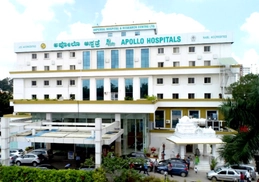
Apollo Bangalore

Apollo Chennai
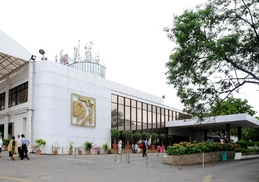
Apollo Health City
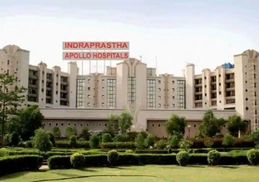
Apollo Indraprastha
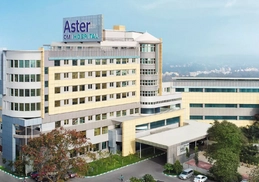
Aster CMI
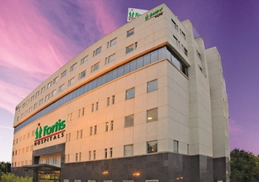
Fortis Bangalore
Frequently Asked Questions
What is the cause of prostate enlargement?
What are the treatments for an enlarged prostate?
Is an enlarged prostate dangerous?